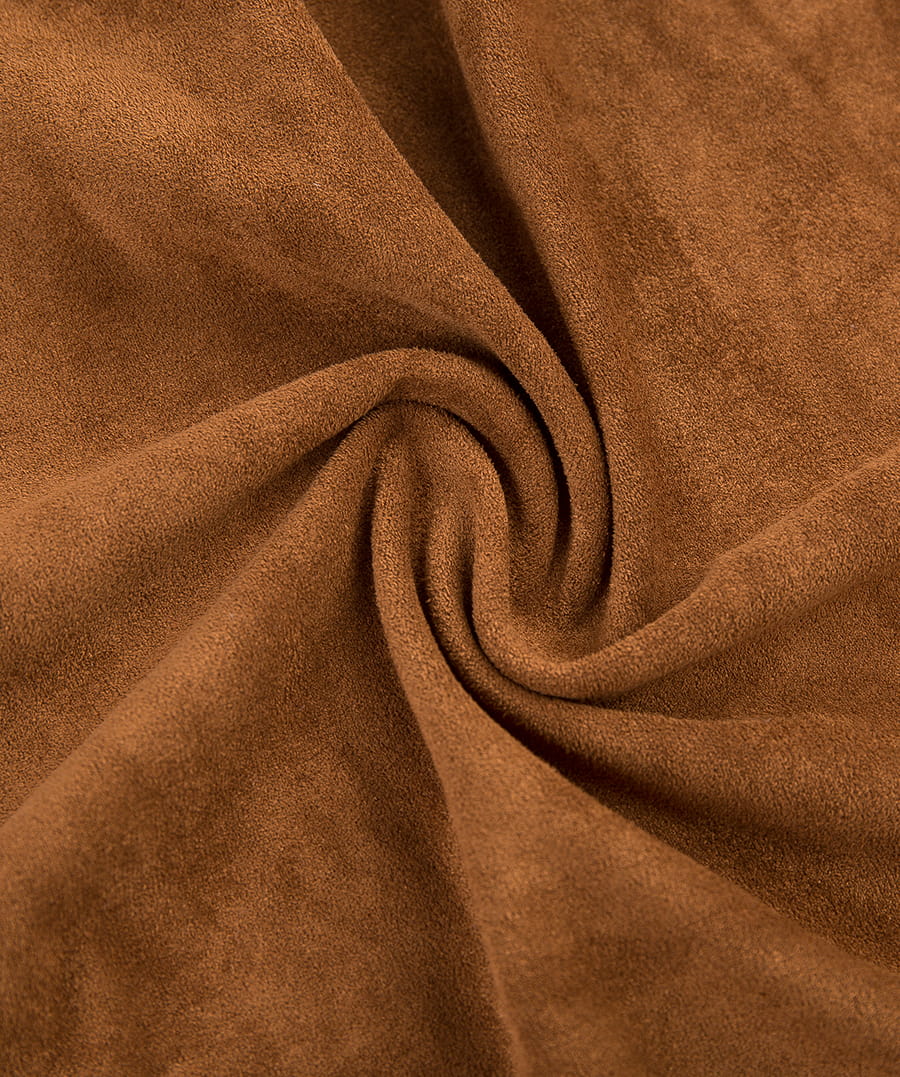At present, environmental protection and sustainable development have become one of the core issues of the textile industry transformation. As consumers continue to pay more attention to environmental protection and the pressure on policies and regulations increases, the textile industry is gradually developing towards a more environmentally friendly and sustainable direction. Elastic Microfiber Fabric, as an emerging high-performance fabric, has become an important force in driving this transformation due to its unique properties and environmental advantages, and has played a pivotal role in the field of sustainable textiles.
The Elastic Microfiber Fabric is woven from microfibers with a diameter of only half the normal fiber, a fiber structure that imparts elasticity and strength to the fabric while maintaining lightness and comfort. The small size of these fibers gives Elastic Microfiber Fabric a higher surface area, effectively reducing the demand for water, energy and chemicals under a variety of conditions. In addition, the production process of this fabric is relatively environmentally friendly, and the energy and water resources required for the manufacturing process are greatly reduced compared to traditional textiles, making it an important choice for the textile industry to achieve sustainable development.
The advantages of Elastic Microfiber Fabric in sustainable textiles are not only reflected in the production process. Due to the strength and durability of the fabric itself, products made from Elastic Microfiber Fabric usually have a longer life. Compared with traditional fabrics, the wear resistance, tensile resistance and UV resistance of this fabric are greatly improved, allowing products using Elastic Microfiber Fabric to maintain a good appearance and function after long-term use. This means that consumers do not need to change products frequently, thereby reducing resource consumption and waste generation, which plays a positive role in reducing the carbon footprint over the life cycle of textiles.
Elastic Microfiber Fabric also has significant advantages in waste management. The degradation process of traditional synthetic fiber products usually takes hundreds of years, which puts huge pressure on the environment. The Elastic Microfiber Fabric was designed with recyclability and ecological impact in mind, which allowed it to reduce environmental pollution through recycling after being abandoned. Some brands are actively exploring how to recycle waste Elastic Microfiber Fabric products, which not only reduces resource waste, but also greatly reduces energy consumption and pollutant emissions generated when producing new fabrics.
For textile manufacturers, Elastic Microfiber Fabric offers multiple opportunities for business development and brand value enhancement. As consumers' requirements for sustainable products continue to increase, products using environmentally friendly materials are becoming more and more popular in the market. Elastic Microfiber Fabric has become a key component of the brand's SDGs with its exceptional comfort, durability and environmental performance. Many well-known brands have begun to include them in their product lines, from sportswear, outdoor equipment to home decoration, the widespread use of Elastic Microfiber Fabric allows brands to not only meet the market's demand for green and environmentally friendly products, but also enhance their brand image and establish a leadership position in the field of environmental protection.
In addition, Elastic Microfiber Fabric is very adaptable and can meet the innovation needs in different fields. In the apparel industry, this fabric provides better breathability, comfort and elasticity, making it an ideal choice for sportswear and high-end fashion products. Its stain resistance and durability also make it equally good in home decor and automotive interiors, especially in products that require frequent cleaning and maintaining aesthetics. The Elastic Microfiber Fabric has obvious advantages. As consumers' demand for high-performance, environmentally friendly and beautiful products continues to increase, the market potential of this fabric will undoubtedly continue to expand.
The advancement of technology provides a more efficient and environmentally friendly way for the production of Elastic Microfiber Fabric. With the continuous improvement of production processes, the cost of Elastic Microfiber Fabric has gradually decreased, allowing more small brands and emerging markets to adopt this environmentally friendly fabric, promoting the expansion of the global sustainable textile market. In addition, policy support for green products by governments around the world and regulation of sustainable development have also promoted the popularity and application of this fabric.
Looking ahead, Elastic Microfiber Fabric's position in the sustainable textile field will be further consolidated. With the increasing strict environmental regulations and the continued growth of consumer demand for green products, Elastic Microfiber Fabric, with its environmental protection, durability and innovation, will surely play a greater role in the sustainable transformation of the global textile industry. From supply chain optimization to product design and innovation, Elastic Microfiber Fabric will undoubtedly occupy a more core position in the textile market in the future. For the textile industry, it is not only an environmentally friendly choice, but also an important step towards a green and low-carbon future.













